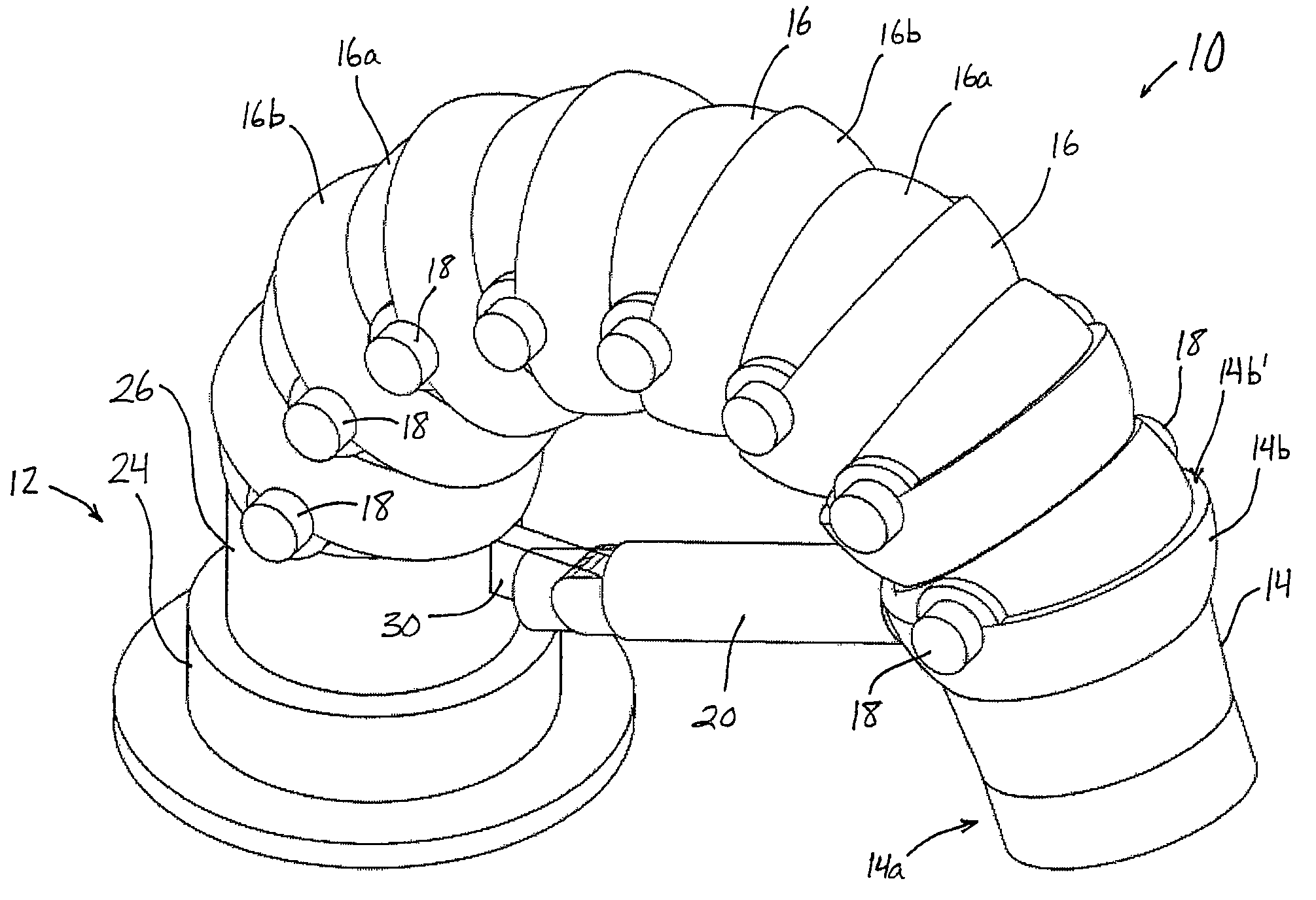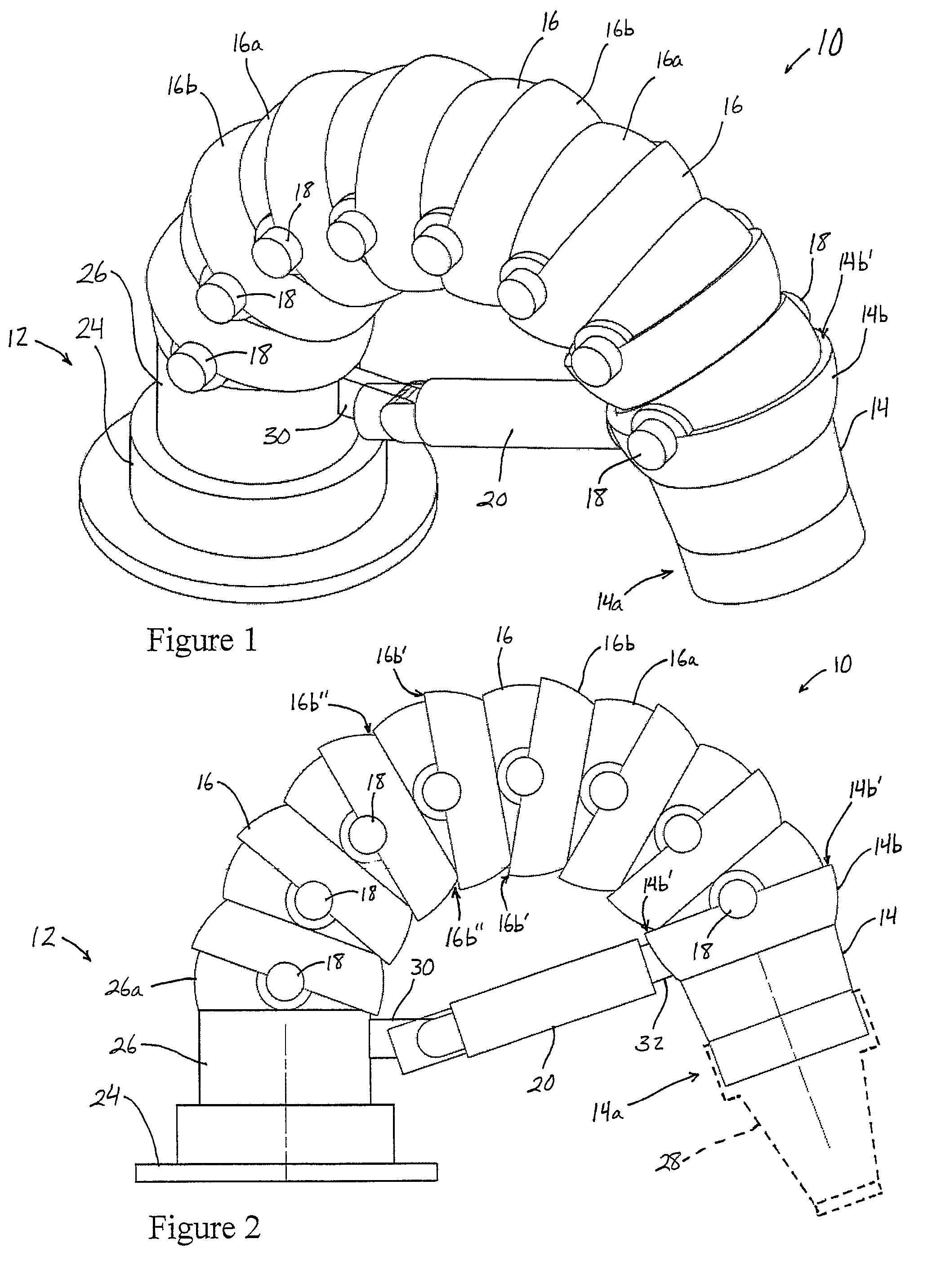Fire-fighting monitor
a monitor and monitor technology, applied in fire rescue, pipe joints, adjustable joints, etc., can solve the problems of reducing fluid flow energy, reducing flow efficiency, and limited directional control, and achieves small storage space and simple and inexpensive design.
- Summary
- Abstract
- Description
- Claims
- Application Information
AI Technical Summary
Benefits of technology
Problems solved by technology
Method used
Image
Examples
Embodiment Construction
[0025]Referring to FIG. 1, the numeral 10 generally designates a fire-fighting monitor of the present invention. As will be more fully described below, monitor 10 is adapted to exhibit increased flexibility, an efficient fluid path, and a compact stowage configuration.
[0026]Referring to FIGS. 1-4, monitor 10 includes a base 12 defining an inlet, an outlet 14, and a plurality of hollow members 16 arranged in series between base 12 and outlet 14. Each hollow member 16 is coupled or connected to an adjacent hollow member 16 via a pair of joints 18, each pair of joints providing a pivot axis. Additionally, one hollow member is coupled or connected to base 12 and another hollow member is coupled or connected to a hollow member configured as an outlet 14 to thereby form a flexible monitor body that extends from the base to the outlet.
[0027]Thus, the hollow members are pivotally mounted to one another in series about a plurality of pivot axes to form a straight fluid path (FIGS. 4 and 5) o...
PUM
 Login to View More
Login to View More Abstract
Description
Claims
Application Information
 Login to View More
Login to View More - R&D
- Intellectual Property
- Life Sciences
- Materials
- Tech Scout
- Unparalleled Data Quality
- Higher Quality Content
- 60% Fewer Hallucinations
Browse by: Latest US Patents, China's latest patents, Technical Efficacy Thesaurus, Application Domain, Technology Topic, Popular Technical Reports.
© 2025 PatSnap. All rights reserved.Legal|Privacy policy|Modern Slavery Act Transparency Statement|Sitemap|About US| Contact US: help@patsnap.com



